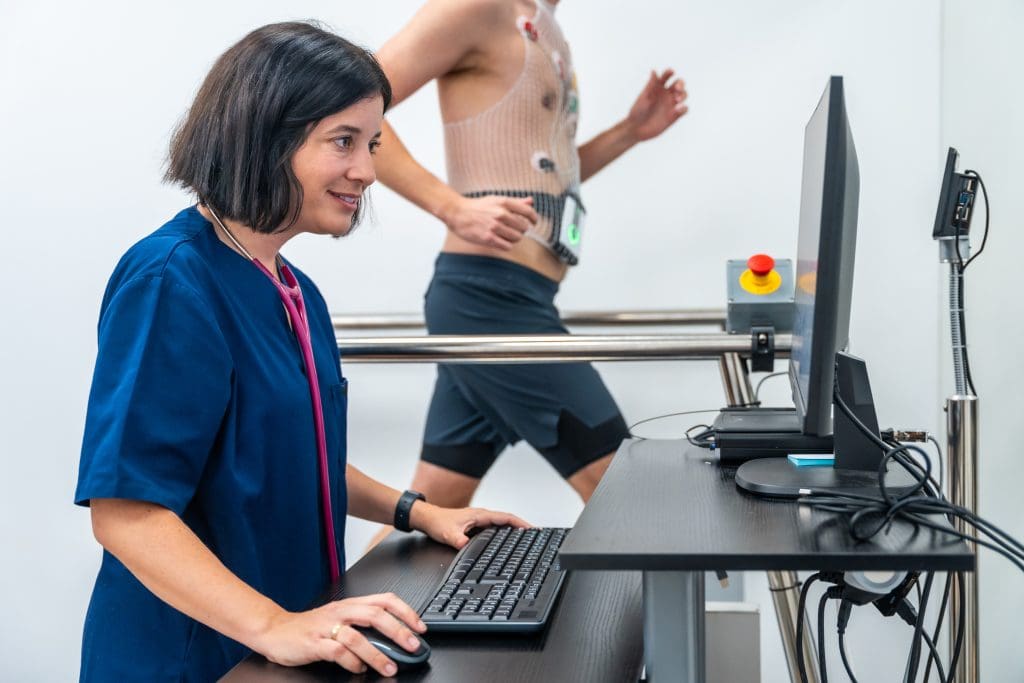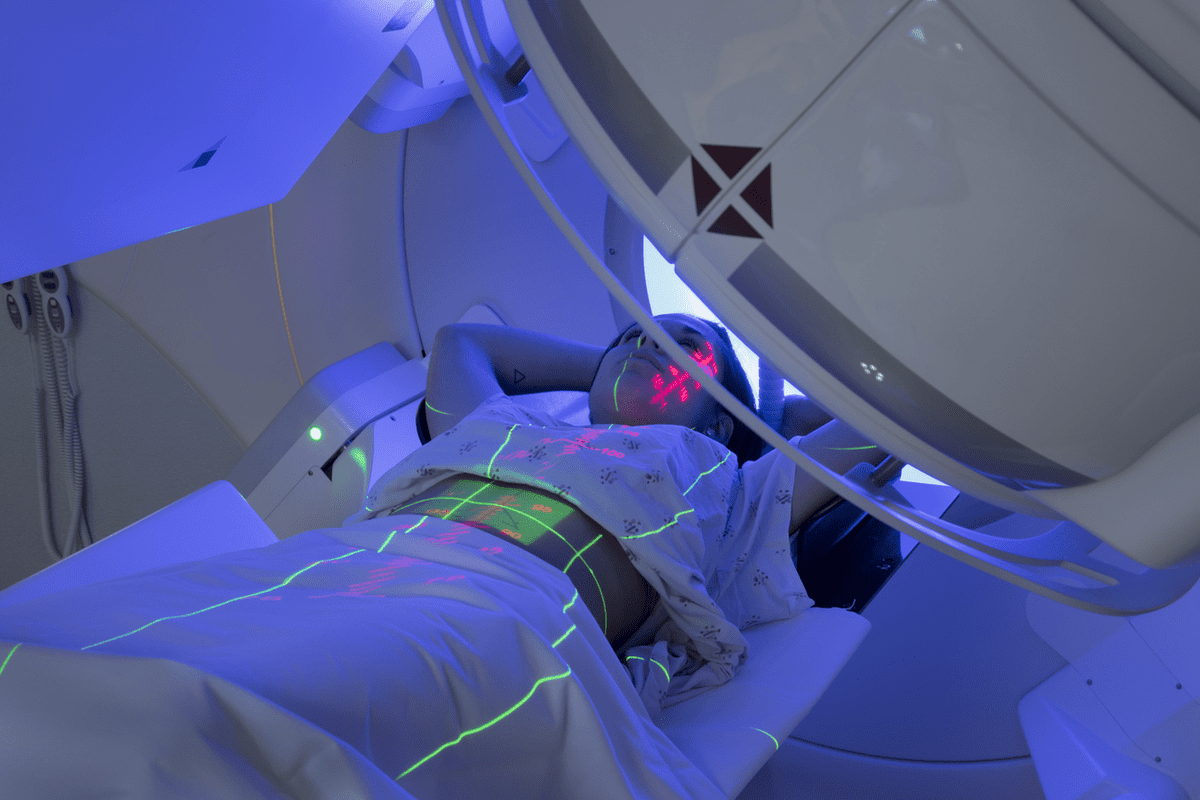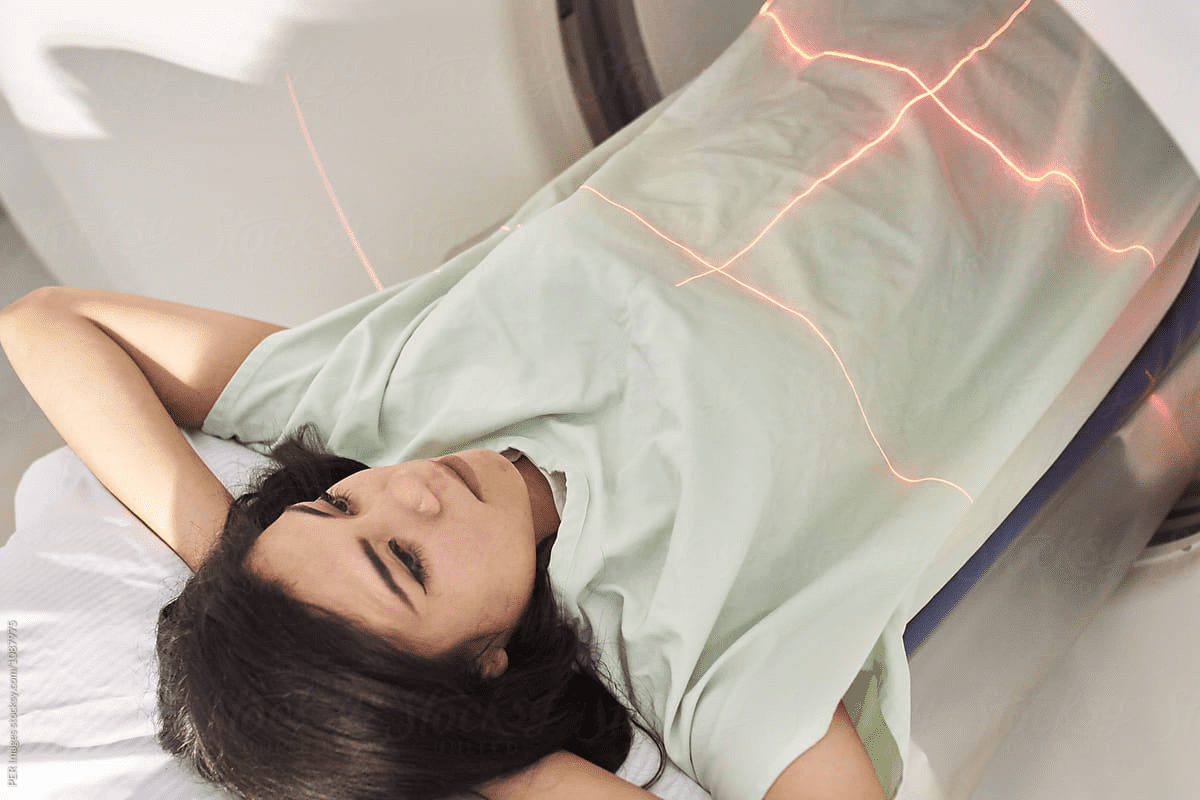Therefore, understanding what constitutes normal blood pressure during a stress test is essential.
A stress test, often used in nuclear medicine, is a key tool for checking heart health. It’s used when you’re physically active.
Knowing your blood pressure during a stress test is key for correct diagnoses and treatment plans.
So, what’s considered normal blood pressure during such a test?
Key Takeaways
- Understanding the importance of blood pressure during a stress test.
- Knowing what normal blood pressure readings are.
- The role of nuclear stress tests in diagnosing heart conditions.
- How blood pressure is tracked during a stress test.
- Factors that can affect blood pressure during a stress test.
The Purpose and Importance of Cardiac Stress Testing

Cardiac stress tests check how well the heart works when it’s stressed. They give doctors important info for diagnosing and planning treatments. These tests show how the heart performs during exercise or with medicine, spotting problems that might not show up at rest.
How Stress Tests Evaluate Heart Function
Stress tests make the heart work harder, usually through exercise or medicine. This lets doctors see how the heart handles stress. They look at heart rate, blood pressure, and ECG readings to get a full picture of heart health. Nuclear imaging in medicine might also be used to see the heart’s blood flow and find any problems.
The test’s results help doctors see how well the heart muscle works. They find out if some parts of the heart don’t get enough blood. This info is key for diagnosing heart disease, figuring out heart attack risk, and checking if treatments work.
When Doctors Recommend Stress Testing
Doctors suggest stress tests for many reasons. They do it when patients have heart disease symptoms like chest pain or shortness of breath. They also do it for patients with heart disease risk factors, like high blood pressure or diabetes.
Stress tests help monitor patients with known heart disease. They guide treatment choices and check if more procedures like angioplasty or bypass surgery are needed. They’re also suggested for patients about to have surgery to check their heart risk. Or for those who’ve had heart procedures before, to see how well they’re doing.
Normal Blood Pressure Ranges at Rest
Knowing the normal blood pressure ranges is key to checking your heart health when you’re not moving. Blood pressure is shown in millimetres of mercury (mmHg). It has two numbers: systolic (the top number) and diastolic (the bottom number).
Typically, a normal resting blood pressure is under 120/80 mmHg. The American Heart Association has set blood pressure categories based on these numbers.
Standard Blood Pressure Categories
Blood pressure categories help doctors spot and treat high blood pressure. Here’s how they’re defined:
| Blood Pressure Category | Systolic mmHg | Diastolic mmHg |
| Normal | Less than 120 | Less than 80 |
| Elevated | 120-129 | Less than 80 |
| Hypertension Stage 1 | 130-139 | 80-89 |
| Hypertension Stage 2 | 140 or higher | 90 or higher |
Factors That Influence Resting Blood Pressure
Many things can affect your resting blood pressure. These include your age, how active you are, what you eat, how stressed you are, and your genes. Age is a big factor because blood pressure usually goes up as you get older. This is because your arteries get stiffer.
What you eat is also very important. Eating too much sodium, caffeine, and alcohol can raise your blood pressure. But eating lots of fruits, vegetables, and whole grains can help keep it healthy.
Being active is another key factor. Regular exercise can lower your resting blood pressure and boost your heart health. Stress-reducing activities like meditation and deep breathing can also help keep your blood pressure in check.
Physiological Changes During Exercise
Exercise sets off a series of changes in the body. It gets ready for more work. When we start moving, our body makes big changes to use more energy.
How the Cardiovascular System Responds to Exertion
The cardiovascular system is key in exercise. It boosts blood flow to muscles. This happens by increasing heart rate and cardiac output.
This lets the body send more oxygen and nutrients to muscles working hard. The heart rate goes up fast when we start exercising. This helps with better blood flow.
The autonomic nervous system controls this. It balances inputs to adjust heart rate based on exercise intensity.
The Relationship Between Heart Rate and Blood Pressure
Heart rate and blood pressure are closely linked during exercise. As heart rate goes up, so does blood pressure. This ensures enough blood gets to muscles.
Systolic blood pressure goes up a lot with exercise. Diastolic blood pressure might stay the same or go down a bit.
Knowing this helps us understand stress test results and heart health. It shows how well the heart and blood vessels handle exercise.
Normal Blood Pressure During a Stress Test
Knowing what normal blood pressure is during a stress test is key. Blood pressure shows how well our heart is working. It tells us a lot about our heart’s health when we’re stressed.
Expected Systolic Blood Pressure Response
Systolic blood pressure, the top number, goes up during a stress test. This is because our heart works harder to pump more blood. For a healthy person, this number can jump to 180-220 mmHg when we exercise hard.
But, how much it goes up can change. It depends on age, how fit we are, and if we have heart problems.
Expected Diastolic Blood Pressure Response
Diastolic blood pressure, the bottom number, usually stays the same or goes down a bit during a stress test. If it goes up a lot, it’s not normal and might need looking into. Sometimes, it goes down because our blood vessels get wider with exercise.
- Normal systolic blood pressure response: Increase to 180-220 mmHg
- Normal diastolic blood pressure response: Remains stable or decreases slightly
It’s important to look at these changes with the person’s overall health in mind. If the numbers don’t look right, it could mean there’s a heart problem that needs to be checked.
Abnormal Blood Pressure Responses and Their Significance
It’s key to understand abnormal blood pressure responses when looking at stress test results. These responses can show signs of heart problems that need more checking.
Hypertensive Reactions: Causes and Clinical Implications
A hypertensive reaction in a stress test means blood pressure goes up too much. This can happen for many reasons, like high blood pressure, anxiety, or pain during the test.
“An exaggerated blood pressure response to exercise is associated with a higher risk of developing hypertension and cardiovascular events.”
” American Heart Association
Hypertensive reactions are serious. Research shows people with big blood pressure jumps during exercise are more likely to have heart problems later.
| Cause | Clinical Implication |
| Underlying Hypertension | Increased risk of cardiovascular events |
| Anxiety or Pain | Potential for false-positive results |
Hypotensive Responses: When Blood Pressure Drops
A hypotensive response, or blood pressure dropping during a stress test, is also important. It might show severe coronary artery disease or other serious health issues.
- A big drop in blood pressure could mean serious heart problems.
- More tests are usually needed to figure out why.
In summary, both high and low blood pressure responses during a stress test are signs that need careful attention and might need more tests.
Types of Cardiac Stress Tests
Cardiac stress tests vary in their approach. They range from exercise-based tests to advanced imaging techniques. The choice of test depends on the patient’s condition, medical history, and the specific information needed by healthcare providers.
Exercise Electrocardiogram (ECG) Testing
Exercise ECG testing, also known as a stress test or treadmill test, is a common method. It evaluates heart function under physical stress. During the test, the patient walks on a treadmill or pedals a stationary bike while their heart activity is monitored using electrocardiography.
The primary purpose of exercise ECG testing is to assess the heart’s response to exertion. It checks for signs of coronary artery disease or other heart conditions. This test is useful for diagnosing ischemia (reduced blood flow to the heart muscle) and arrhythmias that occur during physical activity.
Imaging Stress Tests
Imaging stress tests combine physical exertion or pharmacological stress with imaging techniques. These tests provide more detailed information than standard ECG stress tests. They are useful for patients with certain medical conditions or when more precise diagnostic information is needed.
There are several types of imaging stress tests, including:
- Echocardiography Stress Test: Uses ultrasound waves to create images of the heart before and after exercise.
- Nuclear Stress Test: Involves injecting a small amount of radioactive tracer into the bloodstream to visualize heart function and blood flow.
- Cardiac MRI Stress Test: Employs magnetic resonance imaging to assess heart function and blood flow under stress.
| Test Type | Description | Key Benefits |
| Exercise ECG | Monitors heart activity during physical exertion | Simple, cost-effective, and widely available |
| Echocardiography Stress Test | Uses ultrasound to image the heart before and after exercise | Provides detailed images of heart structure and function |
| Nuclear Stress Test | Involves radioactive tracer to visualize heart function and blood flow | Highly sensitive for detecting coronary artery disease |
| Cardiac MRI Stress Test | Employs MRI to assess heart function and blood flow under stress | Offers detailed images without radiation exposure |
Each type of cardiac stress test has its advantages. They are chosen based on the individual patient’s needs and medical history. Understanding these options helps patients and healthcare providers make informed decisions about diagnostic testing.
Nuclear Medicine in Cardiac Stress Testing
Nuclear medicine is key in cardiac stress testing. It shows how the heart works under stress. This method is vital in cardiology, giving a detailed look at the heart’s performance during stress.
Principles of Nuclear Medicine Imaging
Nuclear medicine uses small amounts of radioactive materials. It helps diagnose and treat diseases like cancer, heart disease, and more.
First, a radioactive tracer is injected into the patient’s blood. It builds up in the heart muscle, showing blood flow. This lets doctors check the heart’s blood flow.
Radioactive Tracers and Their Role
Tracers like Technetium-99m (Tc-99m) sestamibi are used in cardiac stress tests. They emit gamma rays. A gamma camera catches these rays to make heart images.
“The use of radioactive tracers in nuclear medicine has revolutionized cardiac imaging, enabling precise assessment of myocardial perfusion and function.”
Cardiologist
Myocardial Perfusion Imaging Process
Myocardial perfusion imaging (MPI) checks blood flow to the heart muscle. It has two phases: stress and rest.
- During stress, the patient exercises or takes a stress agent to raise heart rate and blood flow.
- The tracer is injected at peak stress, and images are taken right after.
- Rest phase images are taken a few hours later to compare blood flow at rest and stress.
| Phase | Description | Imaging Purpose |
| Stress | Patient is stressed through exercise or pharmacological means | Assess myocardial blood flow under stress |
| Rest | Patient is at rest | Compare blood flow at rest to assess perfusion defects |
By comparing stress and rest images, doctors can spot heart problems. This helps guide treatment choices.
Blood Pressure Monitoring During Nuclear Stress Tests
Blood pressure monitoring is key during nuclear stress tests. These tests check how well the heart works under stress. Stress can be from exercise or special medicines.
When people can’t exercise, special medicines are used. These medicines make the heart work like it would with exercise. This way, the heart’s function can be checked without needing to move much.
Effects of Pharmacological Stress Agents on Blood Pressure
Medicines like adenosine, regadenoson, and dobutamine affect blood pressure differently. Adenosine and regadenoson make blood vessels wider, which can lower blood pressure. On the other hand, dobutamine makes the heart beat faster and stronger, which can raise blood pressure.
It’s very important to watch blood pressure closely when these medicines are given. A big drop or rise in blood pressure could mean a problem that needs quick help.
Specialized Monitoring Protocols
There are special ways to watch the heart during nuclear stress tests. These include:
- Keeping a close eye on blood pressure
- Monitoring the heart’s electrical activity with an ECG
- Checking for symptoms like chest pain or trouble breathing
These steps help doctors spot any problems fast. They can then act quickly. The test’s findings help doctors figure out and treat heart problems.
Watching blood pressure during nuclear stress tests is very important. It helps doctors find and treat heart issues like coronary artery disease. This way, they can make better plans for treatment and help patients get better.
Preparing for Your Stress Test
To get accurate results, it’s key to prepare well for a stress test. Your doctor will give you specific instructions. Here are some general tips to help you get ready.
Medication Management Before Testing
Managing your medications before a stress test is very important. Tell your doctor about all the medications you’re taking. This includes prescription drugs, over-the-counter meds, and supplements.
Some meds might need to be adjusted or stopped before the test. For example, beta-blockers might be withheld to make sure your heart rate reacts right during the test. Your doctor will tell you which meds to keep taking or stop and when to do it.
“It’s essential to follow your doctor’s instructions regarding medication management to ensure the stress test results are accurate and reliable.” – American Heart Association
Dietary and Activity Guidelines
It’s also important to prepare your diet. Avoid eating or drinking anything except water for at least four hours before the test. Caffeine and nicotine can affect your heart rate, so it’s best to avoid them for a few hours before the test too.
Wear comfortable clothes and shoes that are good for exercise. If you’re doing an exercise stress test, wear loose, comfy clothes and sturdy shoes.
| Preparation Step | Guideline |
| Medication Management | Inform your doctor about all medications; follow their instructions on adjustments. |
| Dietary Preparation | Avoid food and drink except water for at least four hours before the test. |
| Activity Preparation | Wear comfortable clothing and shoes suitable for exercise. |
Also, plan to arrive early at the testing facility. This way, you can finish any paperwork and get settled before your test.
By following these tips, you can help make sure your stress test is done safely and effectively. This will give your healthcare team the info they need to check your heart health.
The Stress Test Experience: Step by Step
The stress test experience has several steps, from getting ready to recovering after. Knowing each step can make you feel more at ease and ready for the test.
Before the Test Begins
First, you’ll change into comfy clothes, maybe a hospital gown. An IV line might be put in your arm for the test.
Then, electrodes will be placed on your chest. These are connected to an ECG machine. It tracks your heart’s electrical signals during the test.
During the Exercise or Pharmacological Stress Phase
Next, you’ll either walk on a treadmill or ride a stationary bike. The workout gets harder to stress your heart. If you can’t exercise, a medicine will be used instead.
Your blood pressure, heart rate, and ECG will be watched closely. You might be asked about any symptoms, like chest pain or trouble breathing.
Recovery Period Monitoring
After the stress part, you’ll rest. Your heart rate and blood pressure will be checked as they go back to normal.
This recovery time is key. It shows how well your heart recovers from the stress. Any issues here can help with your diagnosis.
| Phase | Key Activities | Monitoring |
| Before Test | Change into comfortable clothing, IV insertion, electrode placement | ECG |
| During Stress | Exercise or pharmacological stress | Blood pressure, heart rate, ECG |
| Recovery | Monitoring as heart rate and blood pressure return to baseline | Blood pressure, heart rate |
Interpreting Stress Test Results
The results of a stress test give us important clues about our heart health. It’s key to understand these results to diagnose and manage heart issues.
What Your Blood Pressure Response Indicates
Your blood pressure during a stress test shows how well your heart is doing. A normal test shows blood pressure going up as you exercise, then coming back down when you rest. But, if your blood pressure doesn’t go up or drops too low, it could mean there’s a problem with your heart.
Blood Pressure Categories During Stress Testing:
| Blood Pressure Category | Systolic BP (mmHg) | Diastolic BP (mmHg) |
| Normal Response | Increase to 180-220 | Remains the same or decreases |
| Hypertensive Response | Exceeds 220 | May increase |
| Hypotensive Response | Decreases or fails to rise | May decrease |
Other Key Measurements Beside Blood Pressure
Other important things checked during a stress test include your heart rate, ECG readings, and any symptoms you might have. These all help paint a full picture of how your heart handles stress.
Key Measurements:
- Heart Rate Response: A normal increase in heart rate in response to exercise.
- ECG Readings: Monitoring for signs of ischemia or arrhythmias.
- Symptoms: Reporting any chest pain, dizziness, or other concerning symptoms.
Looking at all these measurements helps doctors create the best plan to keep your heart healthy.
Safety Considerations and Stress Test Risks
Stress tests are generally safe but come with some risks. These risks are higher for people with heart problems or other health issues.
Common Side Effects and Complications
People getting a stress test might feel dizzy, short of breath, or have chest pain. These feelings usually go away after the test ends. But, in some cases, serious problems like heart attack, arrhythmias, or high blood pressure can happen.
The American Heart Association says serious problems from stress tests are rare. But, it’s important for patients to know about these risks. They should talk to their doctor before the test.
“The risk of serious complications from stress testing is low, but it’s not negligible. Patients should be carefully selected and monitored during the test.”
When a Stress Test Should Be Terminated
A stress test stops if the patient has severe chest pain, can’t breathe well, feels dizzy or faints, or if blood pressure or heart rhythm changes a lot. It also stops if the patient reaches their target heart rate or shows signs of ischemia on the ECG.
Doctors need to watch patients closely during the test. They must be ready to act fast if something goes wrong. Knowing about the risks helps patients prepare for their stress test.
Radiation Safety in Nuclear Stress Testing
Nuclear stress testing is key in heart diagnosis. It uses small amounts of radioactive tracers to see how the heart works under stress. These tests are great for finding heart problems but do expose patients to radiation.
Radiation Exposure Levels
The amount of radiation from a nuclear stress test varies. It depends on the type and amount of tracer used. The dose is usually between 5 to 25 millisieverts (mSv). For comparison, a chest X-ray is about 0.1 mSv.
Several factors affect how much radiation you get:
- The type of radioactive tracer used
- The dose of the tracer administered
- The patient’s body size and composition
- The specific imaging protocol followed
Precautions After Nuclear Medicine Procedures
After a nuclear stress test, patients need to take precautions. This is to protect others, like pregnant women and children, from low levels of radiation. Here are some steps to follow:
- Hydration: Drink lots of water to clear the radioactive tracer from your body.
- Voiding: Go to the bathroom often to lower the radiation dose to your bladder.
- Contact with Others: Try to avoid close contact with pregnant women and children for 24 hours after the test.
- Breastfeeding: If you’re breastfeeding, you might need to stop and discard your milk for a while, as advised by your healthcare team.
It’s important to follow the advice from your healthcare team or the nuclear medicine department. These steps help keep you and those around you safe.
Special Considerations for Patients with Existing Hypertension
Managing hypertension is key during stress tests. It affects the test’s results and the patient’s health. Patients with hypertension need careful attention to ensure their safety and the test’s accuracy.
Modified Testing Protocols
For those with hypertension, special testing protocols are needed. These might include adjusting the exercise intensity or using medicine instead of exercise. The aim is to stress the heart safely and effectively.
Pharmacological stress agents are great for patients who can’t do hard exercise. They include adenosine, regadenoson, and dobutamine. These medicines mimic exercise’s effects on the heart.
| Stress Agent | Mechanism of Action | Common Side Effects |
| Adenosine | Causing vasodilation, increasing blood flow | Chest pain, flushing, dyspnea |
| Regadenoson | Selective A2A receptor agonist, vasodilation | Headache, dizziness, nausea |
| Dobutamine | Increasing heart rate and contractility | Tachycardia, palpitations, headache |
Interpreting Results in Hypertensive Patients
When looking at stress test results for hypertensive patients, we must consider their blood pressure at the start and how it changes. A big jump in blood pressure during exercise might mean a higher risk of heart problems.
The table below shows important things to think about when looking at stress test results for hypertensive patients:
| Parameter | Normal Response | Abnormal Response |
| Systolic Blood Pressure | Increase with exercise | Excessive rise (>220 mmHg) |
| Diastolic Blood Pressure | Remains the same or decreases | Significant increase or decrease |
| Heart Rate | Progressive increase with exercise | Failure to achieve target heart rate |
It’s vital to understand these points to correctly read stress test results for hypertensive patients. This helps in better planning for their care and risk management.
Alternative Testing Methods When Exercise Isn’t Possible
When exercise isn’t an option, doctors use pharmacological stress testing to check heart health. This method is key for those who can’t do traditional exercise tests. This might be due to health issues or physical limits.
Pharmacological Stress Testing Options
Pharmacological stress testing uses medicines to mimic exercise’s heart effects. It’s great for those who can’t exercise well. This includes people with arthritis, severe obesity, or neurological disorders.
The medicines used increase heart rate and blood flow. This simulates exercise. It helps doctors check heart function and spot problems.
Adenosine, Regadenoson, and Dobutamine
Adenosine, regadenoson, and dobutamine are common stress test medicines. Each works differently and is picked based on the patient’s needs and health history.
- Adenosine causes blood vessels to widen, boosting heart muscle blood flow.
- Regadenoson also widens blood vessels but is more targeted.
- Dobutamine makes the heart beat faster and stronger, like exercise does.
| Medication | Mechanism of Action | Primary Use |
| Adenosine | Vasodilation | Stress testing for coronary artery disease |
| Regadenoson | Selective vasodilation | Stress testing for patients with contraindications to adenosine |
| Dobutamine | Increases heart rate and contractility | Stress testing for patients unable to exercise |
The right medicine for a stress test depends on the patient’s health and the test’s goals. Doctors choose carefully to ensure the test is safe and accurate.
Conclusion: Understanding Your Stress Test Results
It’s important to understand your stress test results to check your heart health. A nuclear stress test shows how your heart works when stressed, like your blood pressure.
We’ve talked about why stress tests are key, how they’re done, and what they mean. Your blood pressure during a test tells a lot about your heart health. If it’s not normal, it might mean you have a problem.
Knowing what your stress test says helps you understand your health better. If you’re unsure about your results, talk to your doctor. They can help you make sense of them.
FAQ
What is normal blood pressure during a stress test?
During a stress test, your blood pressure should go up to 160-220 mmHg systolic. Your diastolic pressure usually stays the same or goes down a bit.
How does nuclear medicine work in cardiac stress testing?
Nuclear medicine uses tiny amounts of radioactive tracers in cardiac stress tests. These tracers show how the heart works and blood flows. They help see the heart’s function and blood flow under stress.
What are the side effects of nuclear medicine injection?
Side effects from nuclear medicine injections are usually mild. You might feel a headache, nausea, or dizziness. But serious side effects are very rare.
How long are you radioactive after a nuclear stress test?
The radioactive tracer in a nuclear stress test fades away in a few hours to days. This depends on the tracer used.
Can I drink alcohol after a nuclear stress test?
It’s best to avoid alcohol for a while after a nuclear stress test. Your doctor will tell you how long to wait to avoid any problems.
How to prepare for a stress test?
To get ready for a stress test, manage your meds as told, skip heavy meals and caffeine, and nicotine. Wear comfy clothes and shoes for exercise.
What happens during a nuclear stress test?
In a nuclear stress test, you get a radioactive tracer and then do exercise or take medicine. Imaging shows how your heart works and blood flows.
Is contrast dye radioactive?
Contrast dye in some tests isn’t radioactive. But in nuclear medicine, radioactive tracers are used, which are different.
Can you drive after a nuclear stress test?
It’s best to have someone else drive you home after a nuclear stress test. This is true if you took medicine or felt symptoms during the test.
What are the risks of a nuclear stress test?
Risks include allergic reactions, heart rhythm changes, and, very rarely, a heart attack. But the test is safe when done right.
How does a nuclear stress test evaluate heart function?
It checks blood flow to the heart muscle under stress and at rest. Radioactive tracers show where blood flow is low or damaged.
What is a radioactive tracer?
A radioactive tracer is a substance that emits radiation. It’s used in nuclear medicine to see and check the function of body parts, like the heart.
What precautions should be taken after a nuclear scan?
After a nuclear scan, drink lots of water to get rid of the tracer. You might also be told to avoid close contact with pregnant women and young kids for a bit.







